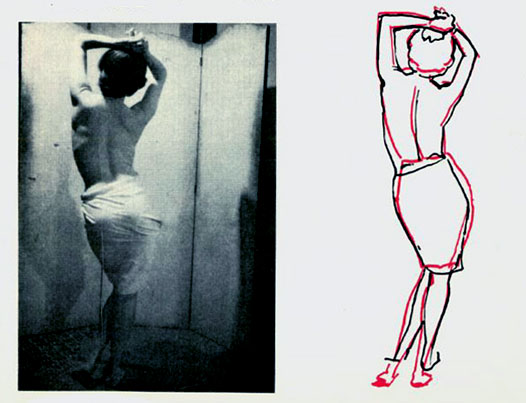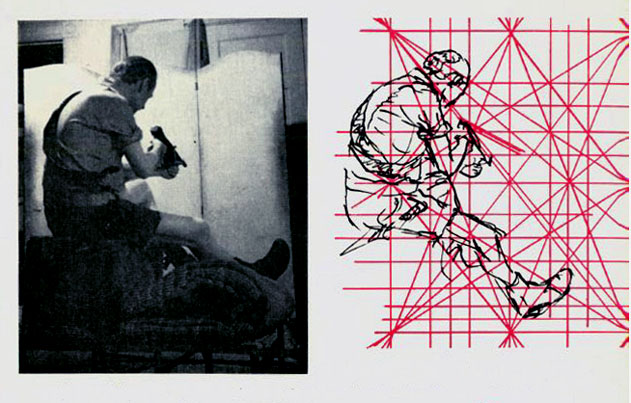Illustrating
for Men's Magazines
by NORMAN
SAUNDERS

Sketch
Number 1
This was the first
sketch I submitted, with the idea that it was to be a two-page
spread.
The whack-'em,
wham-'em and wow-'em magazine market is at the moment a lucrative
field for the young illustrator. The editors of these virile,
he-man periodicals are always on the alert for fresh talent.
The artist who can render a tight, contrasty, convincing illustration
replete with a handsome, muscle-bound hero, lush saronged native
girls, and a dash of authentic local color is their man -- and
for good hard cash, too.
The ruggedly
handsome young man in your neighborhood can become an adventure-bound
hero (if you can manage to keep him quiet long enough to take
his photograph). Girls are native to every locale, so wrap one
up in a gaudy cotton print or clinging black chiffon, give her
doe-eyes with an eyebrow pencil, let her hair down, and you're
on your way to a successful career in the He-man magazine market.
(Any good travel magazine is crammed with backgrounds and local
color -- a file of them is indispensable in this market.)
One or two other
things are necessary, the first of which is a good camera. For
my own purposes, the Polaroid ("picture-in-a-minute")
camera, Model 95 or 110, is the least expensive and turns out
the most satisfactory end product. One of these cameras with
a couple of Number-2 photo flood lamps (with reflectors) can
take enough photographs in an hour to turn out any illustration.
Because you get a finished, contrasty print in just 60 seconds,
you can reshoot half-a-dozen times in as many minutes to get
exactly the information you need. Number 44 film gives the best
definition -- and is inexpensive: for less than three dollars
you will have raw materials for a three hundred dollar painting.
You will soon
be able to turn out photographs that can be laid out on a tracing
board and transferred directly to your illustration board. A
40-watt frosted light bulb in an empty box covered with ordinary
window pane glass will serve the purpose nicely. Make a fine
ink tracing with a crowquill pen on tracing paper or thin bond
paper, then enlarge the tracing to about one-and-a-half times
the paper size of the magazine.

Polaroid photo
of model worked up in pen outline for enlarging
These tracings
can be enlarged in any of the usual ways -- a pantagraph, lucied
up with a prism, projected, or photostatted. I prefer to enlarge
them freehand. This is not only the cheapest, but also has the
advantage of developing discipline and drawing ability, and allows
me to make whatever slight changes I wish. It gives the finished
product the stamp of personality.

Polaroid photo
of machine gunner is worked up in pen outline for enlarging



